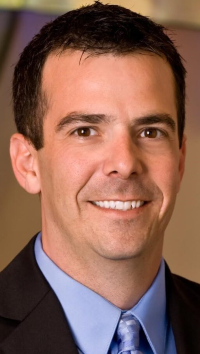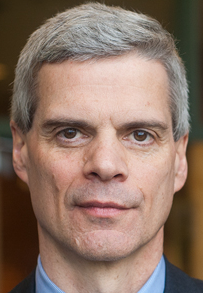Agenda | Note: Subject to change. All times are Central Standard Time PST (UTC -6) |
|
9:00 - 9:30 am Resilient California - Microgrid Regulatory Updates, Opportunities & Outlook
Since 2019, the California Public Utilities Commission has developed a resiliency and microgrid framework and began putting effect rules, policies and programs to comply with SB 1339. This presentation will provide an update of the recent microgrid measures and regulatory initiatives currently underway. Topics Include:
- Recent rulings within the Resiliency and Microgrid Proceeding R.19-09-009
- Regulatory initiatives currently underway such as the $200M Microgrid Incentive Program
- Outlook for 2022 and beyond

Jessica Tse
Senior Regulatory Analyst - Resiliency & Microgrids
California Public Utilities Commission
profile
Senior Regulatory Analyst - Resiliency & Microgrids
California Public Utilities Commission
profile
9:30 - 10:00 am Current Microgrid Projects and Technology Deployments: Pushing the Envelope
The California Energy Commission's Energy Innovation Showcase has awarded over $800 million to cutting edge energy projects in areas such as battery storage, grid planning and operations, smart inverters, and microgrids. Successful projects within this program often serve as a blueprint for wider adoption across the U.S. This presentation will discuss some of the most promising microgrid projects and enabling / emerging technologies that are part of the CEC's current activities, with an eye toward key advances that have the potential to significantly move the microgrid industry forward nationwide.

Mike Gravely
Team Lead and Senior Electrical Engineer
Energy Systems Research Office
California Energy Commission
profile
Team Lead and Senior Electrical Engineer
Energy Systems Research Office
California Energy Commission
profile
10:00 - 11:00 am Microgrid Case Study in Northern California Winery
This session will focus on the long and arduous history of bringing a solar and energy storage microgrid to the amazing Castello di Amarosa in Calistoga, CA. From customer motivation, permitting, shipping, supply chain and design to utility reliability, final commissioning and outcomes will be explored. The expert panel includes partners representing multiple facets of the project representing, the customer, the developer, suppliers and the control systems.




11:00 - 11:30 am Improving Resiliency through Small-Scale Class 1 Wind Turbines
The use of renewable energy sources can have a positive impact not only in environmental terms and cost efficiency, but also in improving the reliability of electricity service, resiliency, and management of outages. It is evident that extreme atmospheric phenomena, which can compromise the functionality of electrical and thermal systems, are increasingly frequent. It is essential to take these phenomena into consideration in order to prevent emergency situations -- with good planning and the use of suitable technologies it is possible to resist extreme phenomena and replace the supply of electrical and thermal energy during times of crisis.
This presentation will discuss how state-of-the-art small wind turbines -- certified according to the international standards IEC 61400, tested, and designed to class 1 wind load resistance - are able to withstand extreme wind conditions up to 70 m/s. These turbines, by nature installed in a distributed manner near loads and designed to be integrated into hybrid and functional systems in stand-alone mode, can represent one of the possible ideal solutions to enhancing grid resiliency and outage management.

11:30 - 12:45 pm Leveraging Existing Assets for Single Premise Microgrids
Not so long ago, the ideas of a million rooftops with solar installed (PV systems) and a million cars that run on electricity (EVs) were considered science fiction. Utility engineers scoffed at the price point of both, even their potential price point, and their impact on the grid. Today, the US has exceeded twice that number, with about half of each in California. The cost of both continue to decline, technology continues to improve, and sales and investment continues to increase. But when the grid goes down, more frequently due to climate change fueled weather events, solar energy stops generating and EV batteries tease their owners with inaccessible days of emergency energy. Technology is emerging that enable customers to ride through a utility outage by leveraging assets they already own - PV systems and EVs. This panel will discuss these important grid backup solutions.
- Current state of vehicle to home (V2G) legislation in CA
- Current state of technical solutions
- What vehicles can power homes today and very soon?
- How long can an EV V2G solution ride through a home or small business?
- With regard to V2G and V2H (vehicle to home), what does the next five years look like?




12:45 - 1:45 pm Lunch Break
1:45 - 3:15 pm Exploring Energy as a Service 'Under The Hood': The Reality of Managing a Multi-Stakeholder, Multi-Partner Microgrid
Today, businesses face accelerating energy challenges related to cost, sustainability, resilience and reliability -- and often lack the resources to address these needs. To enable onsite microgrids with no capital upfront or operational risks, customers now have the opportunity to utilize Energy as a Service: a new business model. Energy as a Service delivers commercial, industrial, government and infrastructure customers the energy outcomes they need with no capital upfront or operational risks. This is accomplished through the design, construction, financing, ownership, operation and maintenance of onsite microgrids, which provide renewable, resilient, reliable, cost-effective and predictable energy.
- The New Electric World requires you to be digitized, diversified and distributed
- New business models, including Energy as a Service helps create resilient and sustainable microgrids at a reduced cost. We know this is an outcome-based business model.
- Strong, strategic partnerships with defined roles are key when it comes to collaboration



3:15 - 3:45 pm Break
3:45 - 5:00 pm Synergistic Microgrid Business Models
Another way to consider the microgrid value proposition is to start by seeking synergies among resources that would or could constitute a microgrid. Those synergistic resources would be combined in a portfolio such that the whole would be greater than the sum of its parts. In addition to resiliency, synergistic microgrids focus on developing a portfolio of load and generation resources that in combination make the microgrid more economically feasible. This portfolio approach reduces the need to rely predominantly on the value derived from resiliency.
This panel session will explore such portfolio synergies, not only in the context of the potential benefits of integrating EV charging into microgrids to provide broader benefits to the power system during excess renewable generation or during ramping, but also in the context of commercial and industrial facilities being synergized with load due to the peculiar and sometimes unique characteristics of each entity within the microgrid. Synergistic Business Models have key implications in the development and deployment of both EV charging facilities and microgrids particularly in the following sectors:
- Infrastructure hubs, industrial and commercial facilities such as ports, warehouses, industrial parks
- Mass transit facilities and transportation hubs - airports, bus depots, rail, light rail
- Fleet vehicle depots and service centers
- Rural areas with a few anchor facilities
- Community centers, hospital complexes, schools, grocery stores, sports arenas and centers, campuses






All times are Central Standard Time PST (UTC -6)
9:00 - 10:30 am AI for Grid Connected and Remote Microgrids
This interactive panel discussion will examine AI predictive analytics and optimal control (or Model Predictive Optimal Control) methods and systems for real-time monitoring and control of grid-connected and remote/islanded microgrids. Real operational data will be presented for a grid-connected project in Waterloo and a remote microgrid in Guatemala. Key takeaways include:
- Introduction to DERMS software and its capabilities for optimal scheduling of numerous DER, DR and DG assets within Microgrids
- Examples of Model Predictive Control algorithms/methods for real-time control of multiple microgrids during normal and contingency conditions
- Case study details of operational microgrid projects that are equipped with state-of-art DERMS software and Model Predictive Controllers for automated and efficient performance





10:30 - 11:00 am Break
11:00 - 12:00 pm The Transformative Impact of Technology on Microgrid Utility Viability in Emerging Markets
Despite challenging circumstances, microgrid utilities in emerging markets have seen tremendous growth in the last five years. The adoption of new IoT technologies allows them to provide cleaner, smarter, and more efficient access to energy. As a result of this growth, the microgrid sector has emerged as a leading force in working towards electrifying the more than 3.5 billion people globally who remain without reliable access to energy.
The world cannot shift towards renewable energy and reduce GHG emissions globally without affordable grid management systems that connect solar power, wind power, and energy storage at the grid edge to the homes and businesses that need it. This session will highlight how American innovation has contributed to the transformation of a sector of microgrid developers into a mass market of strong, reliable, and future-thinking entities around the world, as well as opportunities for American technology providers, utilities, and innovators to enter into these new frontier markets.





12:00 - 1:00 pm Lunch Break
1:00 - 1:30 pm Mid-Size Wind Turbines for Microgrids - Another Piece of the Puzzle
This session will look at the market and technology status of small and mid-size wind turbines, and how mid-size turbines are a great fit for microgrids. We will look at the status of rebates and incentives, as well as future applications - such as fuel cells and hydrogen production.
1:30 - 2:00 pm Disrupting the Lithium-Ion Paradigm
EnerVenue's nickel-hydrogen battery technology originated at NASA in the 1980s and was then further refined and cost-reduced by Stanford University starting in 2017. Upon reaching a revolutionary breakthrough of materials, performance and cost in early 2020, EnerVenue was spun out of Stanford's business accelerator with the mission of commercializing and scaling up the technology for the C&I and utility-scale energy storage industries. The company's nickel-hydrogen battery storage technology made in the USA provides extremely long life, charge and discharge flexibility, extreme durability, minimal maintenance, no air conditioning systems needed, no fire suppression systems are needed due to the inherent non-flammable chemistry; and all with non-toxic, easily sourced materials for >99% recyclability at end of life. Test results and market interest has validated the technology in a big way with a recent $100M Series A funding round led by Schlumberger New Energy and Aramco Energy Ventures.

2:00 - 2:30 pm Optimizing Microgrids with Intelligent Energy Management Software
Hardware is understandably an essential component of microgrids -- PV panels, wind turbines, batteries, and more. Layering of these generation, storage, management, and distribution technologies are key to optimizing cost, carbon, and resiliency. Software is what glues these systems together. Innovative software can help utility operators and energy consumers interface with the equipment responsible for microgrid operations. When paired with intelligent software, energy storage can realize its role as a foundational microgrid building block.
This session will examine how intelligent battery systems are contributing to community microgrid transitions. The software helping to optimize behind the meter solar, storage, and other home equipment, rides on the same technology, communications, and interventional control capabilities enabling grid-level solutions. We will discuss how this kind of software is facilitating transition to microgrids: for installers, homeowners, and most importantly for grid operators and implementers.

2:30 - 3:00 pm Break
3:00 - 3:30 pm Fleet Electrification with Microgrids
The U.S. electric grid needs distributed energy resources in order to support fully electrifying its transportation sector. Microgrids, deployed correctly, will alleviate many of the risks associated with the energy transition and provide cleaner, cheaper, and more reliable charging power. Join this session to hear how Scale Microgrid Solutions has developed a system alongside Proterra Energy for the Santa Clara Valley Transportation Authority (VTA) to power 34 electric transit buses.

3:30 - 4:00 pm Universal Controllers for Next Generation Microgrids in the C&I Market

Note: This speaker is participating as an independent energy industry professional. The opinions expressed by this speaker do not officially represent the viewpoints of the Federal Energy Regulatory Commission (FERC)